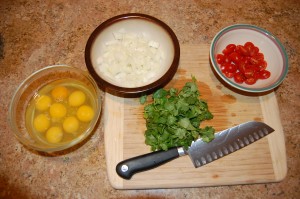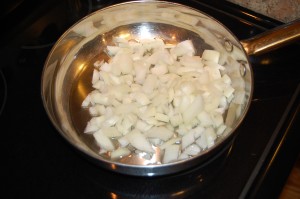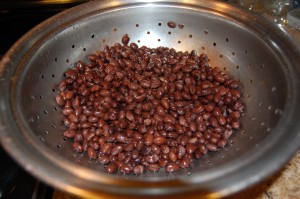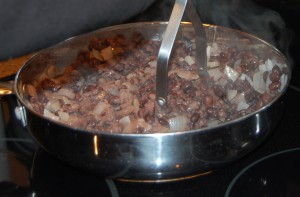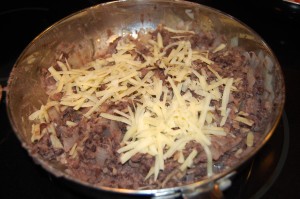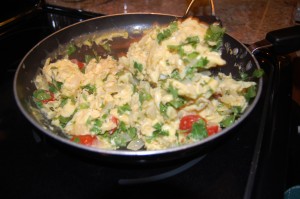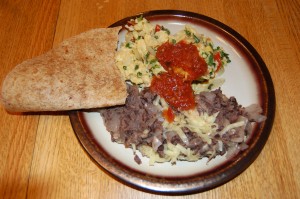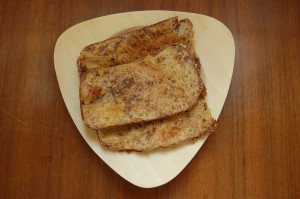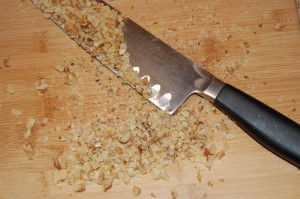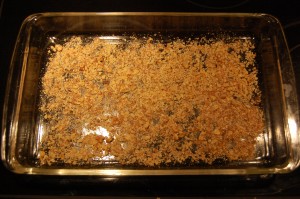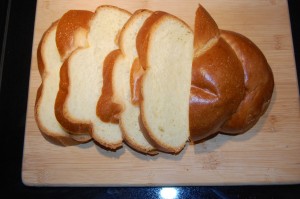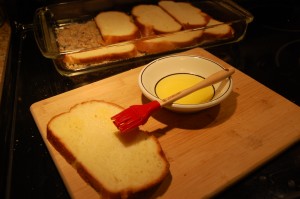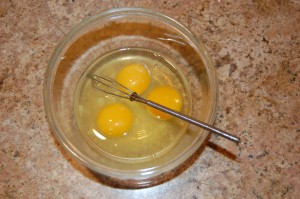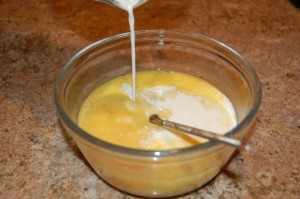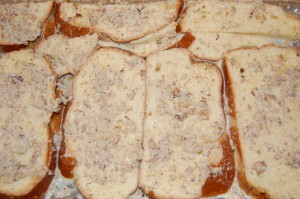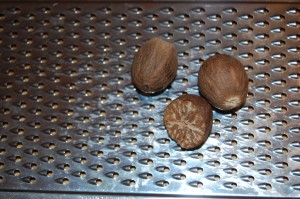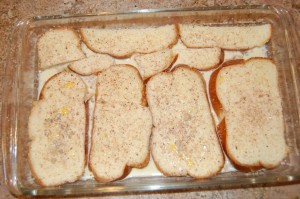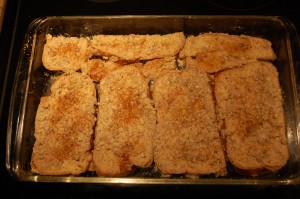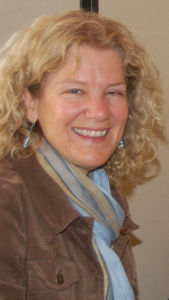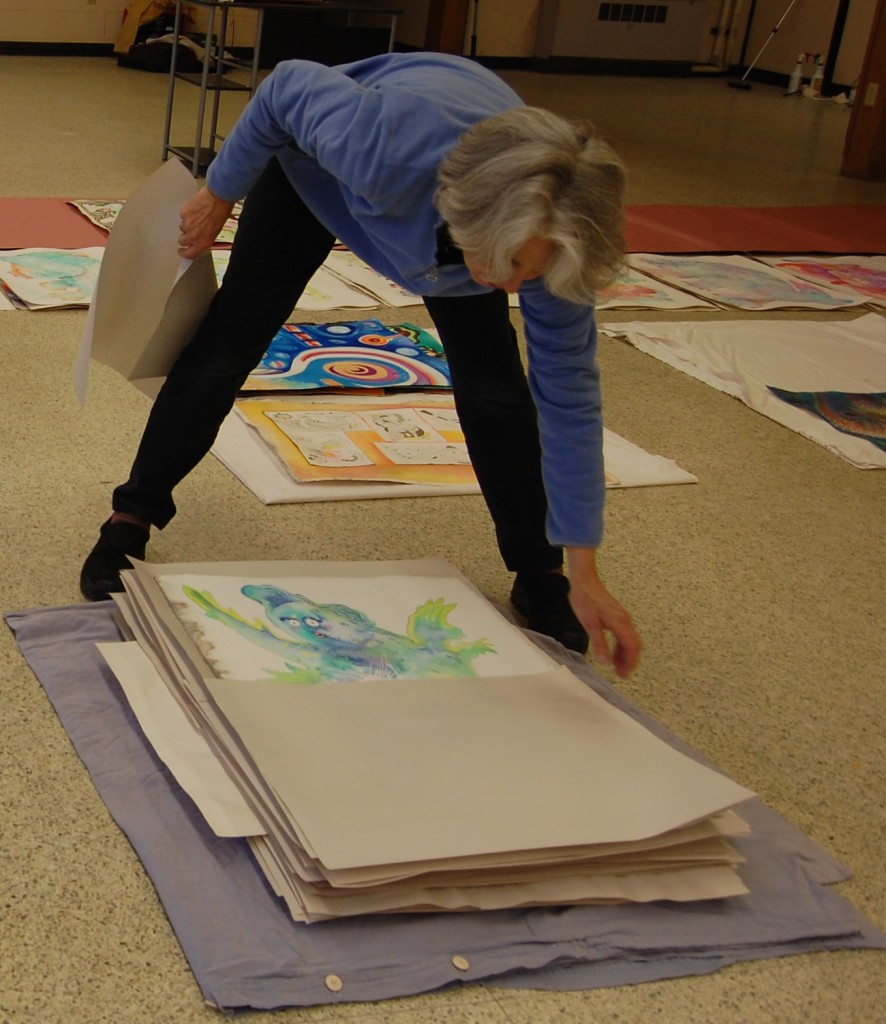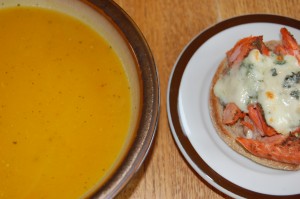
Baking the squash enhances its flavor and produces better texture than you can achieve with boiled squash soups. Sauteed sage, onion, and garlic lend the soup a turkey-stuffing-like flavor. Paired with crisp English muffins topped with salmon and melted gorgonzola cheese, this duo makes an extraordinary yet simple and nutritious meal. This meal’s especially easy to assemble with leftover salmon. I used blackened baked salmon from last night’s supper.
Ingredients for Savory Butternut Squash Soup:
butternut squash (about 4 pounds)
1 medium onion, diced
3 garlic cloves
salt & pepper to taste
1 tablespoon butter
1 tablespoon high heat safflower oil
1 tablespoon dried sage
Water or chicken or vegetable broth (enough to produce the consistency you prefer)
Chicken or vegetable bouillon cube (optional, instead of broth)
Preparation of Savory Butternut Squash Soup:
Cut squash into chunks. Scoop out seeds and set aside. (Seeds may be toasted for garnish.)
Melt butter. Brush melted butter onto surfaces of squash (not on peel). Sprinkle squash with salt and pepper.
Bake squash in 400 degree oven until tender (about 25 -30 minutes).
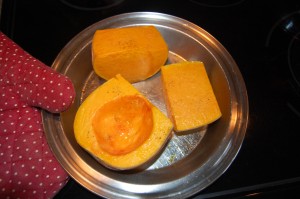
While squash cooks, heat oil in small pan. Add and sauté onion and garlic a few minutes to release flavors. Add sage and sauté a few minutes more.
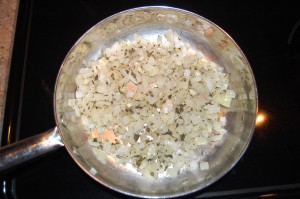
Put sautéed onion mixture into blender with 1 cup of water or broth. Puree.

Scrape pureed onion mixture into large soup pan.
Remove squash from oven. Cut off peel and cut into smaller chunks.
In batches, add cooked squash to blender with water or broth. Scoop blended squash into soup pan containing onion mixture. Turn burner to medium heat. If using bouillon cube, add it now and stir to dissolve.
Taste and adjust spices. If needed, add more water or broth to achieve desired consistency. Once soup is simmering, turn off burner and serve hot.
Ingredients for Gorgonzola Salmon on English Muffins:
English muffins, 1/2 or 1 per person
Gorgonzola cheese, about 1 tablespoon per person
Salmon, cooked (leftover is perfect), enough to cover English muffins
Preparation of Gorgonzola Salmon on English Muffins:
Use fork to divide muffin tops from bottoms. Crisp muffin halves by setting inside oven a few minutes while squash bakes. Be careful to avoid burning!
Remove muffins from oven. Flake salmon over each muffin half. Top salmon with gorgonzola cheese.
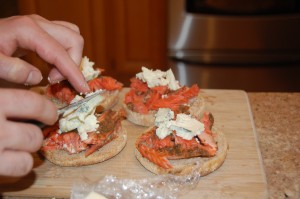
Slip muffins back in oven to warm salmon and melt cheese. Broil or bake a few minutes, until cheese begins to brown. Again, be careful to avoid burning!

